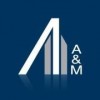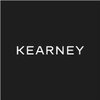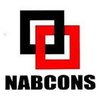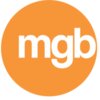Filter interviews by
SPR & CO Interview Questions, Process, and Tips
SPR & CO Interview Experiences
2 interviews found
I applied via Approached by Company and was interviewed in Feb 2024. There were 3 interview rounds.
(4 Questions)
- Q1. Family background
- Q2. Done any course or Internship
- Q3. When can you join if selected
- Q4. Ms Excel formulas
(5 Questions)
- Q1. What is Balance sheet
- Ans.
Balance sheet is a financial statement that shows a company's assets, liabilities, and shareholders' equity at a specific point in time.
It provides a snapshot of a company's financial position.
Assets are what the company owns, liabilities are what it owes, and shareholders' equity is the difference between the two.
The balance sheet follows the accounting equation: Assets = Liabilities + Shareholders' Equity.
It helps in...
- Q2. What is Journal entry
- Ans.
A journal entry is a record of a financial transaction in a company's accounting system.
Journal entries are used to record debits and credits for each transaction.
They help in maintaining accurate financial records and tracking the flow of money within a company.
Each journal entry includes a date, description, accounts affected, and amounts debited and credited.
For example, a journal entry for a sale transaction would ...
- Q3. What is petty cash
- Ans.
Petty cash is a small amount of cash kept on hand by a company for minor expenses.
Petty cash is used for small, everyday expenses that are impractical to pay for with a check or credit card.
It is typically kept in a secure location and managed by a designated employee.
Replenishment of petty cash is done by submitting receipts for the expenses incurred.
Common uses of petty cash include office supplies, postage, and mino...
- Q4. What is contra entry
- Ans.
Contra entry is a transaction that involves both a debit and a credit entry to the same account, resulting in a net zero effect on the account balance.
Contra entries are typically used to correct errors, transfer funds between accounts, or record non-cash transactions.
Examples of contra entries include bank transfers, cash withdrawals for personal use, and corrections of accounting mistakes.
Contra entries are usually m...
- Q5. What is Bank reconciliation statement
- Ans.
Bank reconciliation statement is a document that compares the bank's records with the company's records to ensure they match.
It is used to identify any discrepancies between the two sets of records.
It helps in ensuring the accuracy of the financial transactions recorded by the company.
Common items on a bank reconciliation statement include outstanding checks, deposits in transit, bank errors, and service charges.
The go...
(3 Questions)
- Q1. Why do we use BRS
- Ans.
BRS is used to document the agreed upon requirements between the client and the development team.
BRS helps in ensuring that both parties have a clear understanding of the project requirements.
It serves as a reference point throughout the development process.
BRS helps in minimizing misunderstandings and scope creep.
It provides a basis for testing the final product against the initial requirements.
Examples: Software deve
- Q2. Golden rules of accounting
- Ans.
Golden rules of accounting are basic principles that guide the process of recording financial transactions.
There are three golden rules of accounting: Debit what comes in, Credit what goes out; Debit the receiver, Credit the giver; Debit expenses and losses, Credit income and gains
These rules help maintain the balance in the accounting equation: Assets = Liabilities + Equity
For example, when a company receives cash fro...
- Q3. What is creditor
- Ans.
A creditor is a person or institution to whom money is owed.
A creditor is someone who has provided goods or services on credit to another party
Creditors can include individuals, businesses, or financial institutions
Examples of creditors include suppliers, banks, and bondholders
Top SPR & CO Analyst Interview Questions and Answers
Analyst Interview Questions asked at other Companies
I applied via Recruitment Consulltant and was interviewed before Nov 2021. There were 2 interview rounds.

(3 Questions)
- Q1. Junior audit executive
- Q2. What is mean by gst
- Ans.
GST stands for Goods and Services Tax, a value-added tax levied on the supply of goods and services.
GST is a comprehensive tax system that has replaced multiple indirect taxes in India.
It is a destination-based tax, which means that the tax is collected at the point of consumption.
GST has three components - CGST, SGST, and IGST, which are levied by the central and state governments.
It has simplified the tax structure a...
- Q3. What are the types of taxes
- Ans.
There are several types of taxes, including income tax, sales tax, property tax, and corporate tax.
Income tax is a tax on an individual's earnings or income.
Sales tax is a tax on the sale of goods and services.
Property tax is a tax on the value of real estate or personal property.
Corporate tax is a tax on the profits of corporations.
Other types of taxes include excise tax, estate tax, and payroll tax.
Interview Preparation Tips
- Junior audit executive
Implement ideas and creative thoughts
Junior Accountant Interview Questions asked at other Companies
Jobs at SPR & CO
Top trending discussions






Interview questions from similar companies

Interview Questionnaire
11 Questions
- Q1. Tell me about yourself
- Ans.
I am a highly motivated individual with a passion for learning and a strong work ethic.
I have a degree in computer science and have completed several internships in software development.
I am proficient in programming languages such as Java, Python, and C++.
I am a quick learner and enjoy taking on new challenges.
I am a team player and have experience working collaboratively on projects.
I am also a good communicator and
- Q2. Why Alvarez?
- Ans.
Alvarez is a reputable company with a strong track record in the industry.
Alvarez has a proven track record of success in the industry
The company has a reputation for quality and reliability
Alvarez has a strong commitment to customer satisfaction
The company offers a wide range of products and services to meet the needs of its customers
- Q3. Why consult?
- Ans.
Consulting provides expert advice and solutions to complex problems.
Consulting helps businesses and organizations improve their performance and achieve their goals.
Consultants bring specialized knowledge and experience to help clients solve specific problems.
Consulting can provide an outside perspective and objective analysis of a situation.
Consultants can help clients navigate change and implement new strategies.
Examp...
- Q4. Work experience at Tata Steel.
- Ans.
I have not worked at Tata Steel.
I do not have any work experience at Tata Steel.
I have not worked in the steel industry before.
I am open to exploring opportunities in the field of steel manufacturing.
- Q5. The case was printed and quite long. It was about auto components part and everything was given about it. Suggestions were to be given whether a new company should enter it or not. I was given time to read...
- Q6. Tell me something that is not mentioned in the CV
- Ans.
I have a passion for cooking and have won several local cooking competitions.
I enjoy experimenting with different cuisines and creating my own recipes.
I have taken cooking classes and workshops to improve my skills.
I have volunteered at a local soup kitchen to help prepare meals for the homeless.
I have a food blog where I share my recipes and cooking tips.
I have also catered small events for friends and family.
- Q7. How do your friends perceive you?
- Ans.
My friends perceive me as a reliable and supportive person who is always there for them.
Reliable and dependable
Supportive and empathetic
Good listener
Fun and easy-going
Honest and trustworthy
- Q8. Do you read management books?
- Ans.
Yes, I do read management books.
I believe that reading management books is essential to keep myself updated with the latest trends and techniques in the field.
I have read books like 'The Lean Startup' by Eric Ries, 'Good to Great' by Jim Collins, and 'The 7 Habits of Highly Effective People' by Stephen Covey.
These books have helped me develop my leadership skills, improve my decision-making abilities, and enhance my ov...
- Q9. One finance problem
- Q10. One current affairs question
- Q11. Any question would you like to ask me
Interview Preparation Tips
Experience: I had well prepared the initial questions – about myself, why consult and why Alvarez questions which helped me in gaining confidence. It was my only interview of the day so I was quite relaxed. The interviewers also seemed friendly.
Round: HR Interview
Experience: I hadn’t prepared ‘Something that is not mentioned in the CV’ question. I had to come up with on the spot answer which could have been better.
General Tips: Do well prepare your HR questions and work experience part. It really helps on the final day.
Skills:
College Name: IIM Lucknow

I applied via Referral
Interview Preparation Tips
Experience: There were 3 groups formed when the A&M team arrived on campus. A&M conducted 3 rounds of interviews for each candidate and after all the 3 groups had interviewed the candidate, they used to meet and decide on the candidate. Thus the procedure was elaborate but slow. All the interviews were personal interviews.
After waiting outside for almost 7 hours, the interviews were conducted in a very professional manner and the interviewers focus in knowing your past was crystal clear.
Each of the interviewer asked me to go through my resume in a detailed fashion. Each and every bullet point in my resume was questioned and cross questioned. But the interview was not stressful at any point in time. The key reason was that there were no lies in the resume and hence I was very sure about the background of every point (situation, what action I took, why I took that action, what I did, who helped me, how things eventually worked out and what was the result). There were some usual questions as well on strengths, etc. Such questions were few and were randomly thrown at you. Since A&M is mainly a client oriented company who as a part of turnaround would want to “get things done”, I kept all my answers focused towards this theme. Be aware that the interviewers may try to derail you in case you have very well rehearsed answers. So in between questions, there will be some side talk. That can put you off. So being relaxed would help you just laugh/smile that their comments and then continue where you left off. This interview was a walk-in interview for me on day 6, but I had planned on applying here before and hence had some overview of the firm and what it does. That helped me in asking several questions throughout the day. My questions were mainly on switching my focus from IT to operation and finance. At the end of the day, I was told to contact Amit Laud who would be conducting my interview from his base location. This interview was also a personal interview. I googled him and found some details on him. He was an MBA from Wharton, done a stint in Mckinsey, GE and now was the acting CIO for some client company so some questions on IT implementation would be due. I knew that if I get through then I might end up working for him.
Tips: Keep your cool. It is not important to know how to fix laptop or how to fix account statements (if you are CA). But it was more about how you handle such deliberate distracting situations (as if they were your clients) and make the atmosphere friendly.
Skills: HR Skills
College Name: Indian School Of Business (ISB)

Interview Questionnaire
2 Questions
- Q1. Analyse the hair care industry for a company that wants to enter the Indian market; Given the profits of two companies, where would you invest
- Ans.
The hair care industry in India is growing rapidly, with increasing demand for natural and organic products. Investment decision depends on company goals and market research.
India's hair care industry is expected to reach $13.3 billion by 2025
Growing demand for natural and organic products
Strong competition from established brands like Dove, Pantene, and L'Oreal
Opportunities for niche players in the market
Investment de...
- Q2. HR questions (leadership experiences, why does the profile interest you etc.)
Interview Preparation Tips
Experience: I was calm throughout the process, had practiced more difficult case studies for other consulting interviews, so the one asked in this interview seemed simple.
General Tips: Understand the work profile well before interviewing. Have basic financial concepts in place (basic FRA knowledge form the 1st term would suffice), read a little about M&As.
Skills:
College Name: IIM Lucknow

Interview Questionnaire
6 Questions
- Q1. The case given to me dealt with 2 skin care companies, market leaders in their segment. 2 new market companies had entered the market eroding off the market share of the established firms. Data reading wor...
- Q2. Discuss the current market situation?
- Ans.
The current market situation is volatile due to the ongoing COVID-19 pandemic and geopolitical tensions.
The COVID-19 pandemic has caused disruptions in global supply chains and reduced consumer demand.
Geopolitical tensions, such as the US-China trade war, have led to uncertainty and market fluctuations.
The technology sector has been performing well, while industries such as travel and hospitality have been hit hard.
Inv...
- Q3. What should be the strategy of SkinCareIndiaPvt.Ltd( the market player in the mass market segment)
- Ans.
SkinCareIndiaPvt.Ltd should focus on product innovation, competitive pricing, and effective marketing strategies.
Invest in research and development to create innovative products
Offer competitive pricing to attract price-sensitive customers
Implement effective marketing strategies to increase brand awareness and customer loyalty
Expand product line to cater to different customer needs
Partner with influencers and beauty bl...
- Q4. If you are a PE which firm would you invest in?
- Ans.
I would invest in a firm with a strong management team, a clear growth strategy, and a solid financial track record.
Look for firms with experienced and successful leaders
Research the company's growth potential and plans for expansion
Analyze the company's financial statements and performance history
Consider the industry and market trends
Examples: Blackstone, KKR, Carlyle Group
- Q5. A finance question regarding P&L statement of 2 companies were asked
- Q6. Questions regarding why interested in finance, why consulting etc
Interview Preparation Tips
Experience: In the first round of the interview these questions were discussed in detail and various other scenarios were also taken into consideration
Round: Technical Interview
Experience: I think I was able to justify my interest in finance which added to my cause.
Skills:
College Name: IIM Lucknow

I applied via Campus Placement
(3 Questions)
- Q1. Why Consulting?
- Q2. Why Kearney?
- Q3. Some questions about where I stay, background (schooling, college, and internships) and quizzing achievements.
Your client is a global company looking to acquire an Indian publisher of legal books used by lawyers, students, professionals like CA, CS etc. Help us estimate the market size and key risks for the business.
[Please note that I stands for Interviewer and C stands for Candidate]
C: Asked some clarifying questions with respect to the problem statement.
I: Estimate market size for all kinds of legal books in India (Company Law, criminal law etc.)
C: Can I take a minute to think about the problem?
I: Sure.
C: We can estimate the market size on the basis of three factors, namely- the no. of people buying legal books * Frequency of purchase i.e., No. of books bought by a person* Average price of a book. Should I proceed ahead?
I: Yes.
C: The main customers for our products would be students, Practicing lawyers/legal departments and CAs, CS. Is there any customer segment I should think of?
I: No, you can proceed ahead with estimating the no. of students.
C: The students that would be interested in buying legal books would mainly be students with a background in law, commerce, or management. I would like to estimate the no. of students undergoing a law degree since they would be forming the bulk of the legal books demand in India.
I: Why estimate only the no. of law students?
C: Students with a background in commerce, management or otherwise might require these books for the purpose of 1-2 subjects as part of their course, however law students will be studying more extensively from these books. Hence, I believe that a good amount of the legal books would be demanded by law students in India.
I: Okay, go ahead.
C: As per my knowledge, law is usually a five-year course. So, we can assume that law students would mainly be in the age group of 18-25 years. India has a population of 1.3 B with a median age of 25. Hence, we can assume that 20% of the population i.e., 260 Mn would be in this age group.
I: Fair assumption, go ahead.
C: Mentioned other reduction factors like higher education enrolment in India (30%), different streams of education like arts, commerce, engineering etc. (low enrolment in arts), students who would be going for law within the arts stream etc.
I: Okay, how would you approach estimating the no. of practicing lawyers and CAs?
C: Told.
I: Understood, why do not you tell me the key risks for the business.
C: Increasing digitization can affect the business prospects. Legal books can be used for learning and for the purpose of legal precedents. Some people especially the younger generation may be more comfortable with a digital mode of learning. In addition, digital books may have a search option which will make it easy to find legal references. Plus, it is possible that e-books would be cheaper. In addition, information is getting widely and easily available on the internet so we will have to provide more insightful information in the books we publish.
I: Okay thank you for your time, I would like to close the case in the interest of time. Do you have any questions for me?
C: No Sir. Thank you!
You are a management consultant and you have been appointed by the Ministry of Sports to formulate a strategy to improve the international competitiveness of the Indian Football team within the next 10 years.
[Please note that I stands for Interviewer and C stands for Candidate]
C: Asked some clarifying questions with respect to the problem statement and scope.
C: To improve the international competitiveness of the Indian Football team within the next 10 years, we will have to look at the different stakeholders like the Sports Ministry, student base, families and parents, football associations in India at the national and state level, Sports leagues like ISl, domestic clubs and some foreign leagues and clubs that would be interested in setting up base in India to expand their international base considering the growing market. We can break down the 10-year period into two 5-year plans to improve Indian Football Team's international competitiveness. We can have a broad review of the goals achieved at the end of the first five-year plan so that necessary actions can be taken to achieve our goal. Should I proceed ahead?
I: Can you mention some other stakeholders that would be important in achieving this process?
C: We can also look at the coaching and teaching staff that would be involved in developing talent in the next 10 years. This could be through better training or collaboration with international leagues and clubs. Infrastructure and necessary sports facilities are also important factors to improve Indian Football Team's international competitiveness.
We can look at football schools where children are trained from an early age and their education is taken care of by the clubs that finance these schools Football players, celebrities and other influencers would also be important in improving the football awareness in India. We can also look at providing support/incentives to people whose career involve around football so that they do not have to look at other avenues of employment to support themselves/their families.
I: Okay, in the interest of time let us end the case here. A couple of factors that you mentioned in bits and pieces but missed out on were the corporates that would be sponsoring the football activities and International associations like FIFA, AFC etc.
Your client is a global PE Firm that is looking at investing in a bus operator based out of Australia. You have been hired to look at ways through which the main operating costs can be decreased and come up with recommendations for the same (data-heavy case with an excel screen shared as well).
[Please note that I stands for Interviewer and C stands for Candidate]
C: Asked about the case, PE Firm, bus operator, area of operations, business model etc.
I: So, what do you think are the main cost heads for this business.
C: The main costs can be:
1. Fuel
2. Maintenance
3. Employee Costs (Drivers, other employees etc.)
4. Parking Fees/ Insurance / Tolls etc.
I: Okay you are broadly correct. There might be other costs as well as registration fees, highway access, etc. (An excel tab was screen shared with major cost heads) So as you can see the fuel cost is 12% of the total costs. Can you help us take care of the fuel costs?
C: So, the main determinants of the fuel cost would be Fuel efficiency*distance travelled*Fuel Costs.
I: (shows an excel table showing fuel efficiency according to the place of operation, bus model used, and some other headers like the month of recording, min. and max. fuel efficiency, fleet size etc.) So, can you tell us why is there a difference in the fuel efficiency for different places like Perth, Melbourne etc.?
C: It could be due to the place-specific factors like weather conditions, road conditions, maintenance crew and processes etc.
I: Okay look at the model XYZ used in place A & B (do not remember the exact model or place). Even after taking into consideration the factors you mentioned there is a difference in the fuel efficiency of the same bus model in these two places. Can you tell me the reason for the same?
C: So, before I proceed ahead can you tell me the significance of the month mentioned for these data points?
I: This is the time period during which the fuel efficiency was recorded.
C: So, the difference could be due to the weather conditions in Australia, the early parts of the year will generally be warmer since Australia is in the Southern Hemisphere. Because of that there might be differences in the fuel efficiency in different months. In case it snows in the reason, the bus might need more fuel to cover the same distance. Another reason could be the way drivers are driving. More braking and constant gear changes might result in decreased fuel efficiency for the buses in questions.
I: So, fuel efficiency is low in January due to the use of AC during the summer season in Australia. And as you had mentioned, the other reason is due to the driver behavior. Can you come up with recommendation to optimize our costs?
C: We can use the bus model with the best fuel efficiency to standardize our fuel efficiency. We can also look at using modern technology to come up with the best path to reach our location in the lowest possible time and distance. In case we have different vendors for our fuel requirements, we can enter into a long-term contract with a national vendor to negotiate lower costs and better terms. We can also undertake training for our employees like drivers and maintenance crew to improve their performance and improve fuel efficiency across the board.
Interview Preparation Tips

I applied via Campus Placement
(5 Questions)
- Q1. Introduce yourself.
- Q2. What are you passionate about?
- Q3. Why consulting?
- Q4. Describe your role at Microsoft and their business model.
- Q5. Follow-up questions on work experience.
Sales, marketing, distribution strategy for low-cost water purifier. This statement was related to my CV, had mentioned a water purification project as part of social initiatives in CV.
[Please note that I stands for Interviewer and C stands for Candidate]
I: Sales, marketing, distribution strategy for low-cost water purifier.
C: I asked clarifying questions on the company, the geography the client is planning to launch in, the cost of the purifier, competition in market, and any target customers. I then understood about the functioning of the purifier to check on constraints like the need of electricity etc.
I: There is 1 competitor in the market. Which all customers will you target?
C: I kept access to electricity and lower income group while deciding target audience to come up with distribution strategy involving government, NGOs etc. Then, I identified promotional strategy, included CSR initiatives for villages.
Sales for a candy company has dropped in past 4-5 months. Help the client with the same.
[Please note that I stands for Interviewer and C stands for Candidate]
C: I began with clarifying the problem statement and asked questions around the company, candy variants, price, competition etc. I also included the distribution channel in my scoping questions.
I: The distribution channel is from company to wholesale to retail shops. Regarding competition, 1 competitor is gaining market share.
C: I talked about how candies are commoditized. The next step was to structure the problem into supply-demand and identified the issue from the demand side. Through probing questions identified, that the distributors are the same for various candy companies. Enquired about distributor margins etc. They were the same. I then mapped the customer journey and identified retail shop owner as the major decision maker while handing candies to customers. As next step, I asked questions about the margins for retailers and figured out that the competitor was offering double the margin as the client.
If I want to introduce calligraphy as a course in Delhi University, what factors should be considered? Had mentioned Calligraphy as a hobby.
Enrollment in a course can depend on - future job options, nearby institutes/academies offering such courses.
I mentioned that in DU course fees are less, but the total cost incurred in terms of materials etc. should be factored in.
Interview Preparation Tips

I applied via Campus Placement
(8 Questions)
- Q1. Tell me something about yourself.
- Q2. Asked about learnings from High School and Undergraduate College. How is it different from B-school?
- Q3. Why consulting and specifically why Kearney?
- Q4. Asked about my learnings from Term I of B-school and if the rigorous schedule actually helps?
- Q5. Why did not you not join Hong Kong University even after getting 50% scholarship?
- Q6. What is one thing that excites you most about Consulting?
- Q7. Walk me through your CV.
- Q8. Asked some questions from Internship and Scholarships.
Your client is a Spice Manufacturer and Seller. They have been facing stagnant revenues from past 3 years and looking to expand their business. Help them out through all possible ways.
[Please note that I stands for Interviewer and C stands for Candidate]
C: (Asked some clarifying questions to know about the problem and understand the objective of the company) To understand the client in a better way, could you tell me where is the client located and since how many years they have been in business?
I: The client is located in the northern part of India; they have been in business for past 15 years.
C: Have they experienced any decline in price of their products?
I: No, they have not seen a decrease in price, it’s just they are having constant sales from past 3 years.
C: What is their product line, different modes of distribution? Who are their customers?
I: They sell home-made variety of spices. They manufacture spices and sell it directly to retail outlets, outlets in Mall (like Big Bazaar, Spencer's). Can you think of any other channel?
C: Do they have some online presence? Do they export spices to other countries?
I: No, they are not currently online. They are well established in Northern India.
C: Do we have some information about the other players in the market? What market share do we hold?
I: There are 3-4 big players in the market, we have a market share of almost 8%.
C: Can we say that we are focused on increasing the current market share through increasing our existing revenue or exploring other options?
I: Yes, you can say that.
C: What is the average price of our products? Is it competitive with the other players?
I: It is very similar to other players, and we cannot look for ways to decrease the prices as that option has already been explored.
C: Now that I have got fair bit of idea about the client, I would like to look for ways to increase their revenues. I would majorly focus on exploring the current market of the company as well as if can taper into new markets as well.
I: Sounds like a good approach, lets proceed.
C: There could be two ways to increase our market share in the existing.
Firstly, through exploring more distribution channels and bringing more retail stores on board to strengthen our presence.
Secondly, we can introduce some other SKUs of current product line or launch some new spices/ flavors from other parts of country to the market.
I: Sounds good. Can you also explore some other ways to increase sales?
C: Definitely. As I mentioned we can also explore to look for ways to taper into newer markets outside north India. Also, we can directly launch some new products into new markets but that can be a risky option as we would be more confident about our old products which has previously worked in Northern market.
I: Okay. Can you tell me what other channels we can explore for increasing our market share?
C: We can collaborate with restaurants, other product manufacturers where spices are required in bulk quantity. We can also get listed on online platforms to increase our visibility.
For newer products we can look to launch a different segment which focuses on bringing spices from different regions of the country like Northeastern Dalle spice and other popular flavors.
I: I think you have covered all the aspects where we can look at it. Can you quickly summarize the case for me?
C: Sure. (Summarized- covered both sides of market)
Your client is into Construction business. They have currently experienced increase in their expenses, help them figure out where is the issue and give recommendations.
[Please note that I stands for Interviewer and C stands for Candidate]
C: (Asked some clarifying questions to know about the problem and understand the objective of the company) What all construction businesses is the client involved in like constructing buildings, roads etc. and since when they have been in business?
I: The client is majorly involved in constructing buildings.
C: Who are the competitors and where do we stand in the industry? Have they also been experiencing the same problem?
I: There are 3 other big players in the industry, and we have 10% share in the industry. They are not experiencing any increase in their costs.
C: I would like to understand more about the client’s business, how do they sell flats which they build?
Do they sell it directly to people or they have some contracts with other parties?
I: They majorly work on contractual basis and other third parties sell it finally to people. What are you looking to figure out with this information?
C: I am trying to figure out which could be the major cost driver for the client. Keeping in mind this is a company specific problem I think the major costs would be labor cost and commissions for getting the contracts.
I: Yes, labor costs could be looked at further. What do you think could be the problem with the client?
C: There could be three components to it. First it could be that our labors are demanding more wages now but generally wages are set on industry standards. Second could be that more we are hiring more labors for our work. Third could be that the training costs which is incurred in training new labors is higher for our company.
I: Okay. We are hiring more but our revenues are also increasing in proportion, but our training costs are higher and that’s where the problem is. What do you think can be done?
C: We can look to create efficient batches for training so that whenever training of labor takes place, it is for a larger set of people. If we are spending more on training it's clear that we are not hiring experienced and trained labor, do we have some information on why are we not doing that?
I: That’s a good observation. We have tried hiring experienced civil engineers, but we are not able to match their pay-scale, or they are choosing other career fields. That is why we are hiring inexperienced labor or engineers and training them for the work.
I: Keeping time constraints in mind, you can suggest some recommendations on how to solve the issue at hand.
C: We can look at collaborating with some colleges for regular hiring from them. We can look to outsource training facilities for our labor. We can also look for launching some courses in colleges to incentivize them to join the company by highlighting the perks as well.
I: Okay. Don’t you think we can also look to open up a college specifically for Civil Engineers so that we can have trained quality engineers in our company?
C: Certainly, we can also explore that situation. Although I just thought that the amount required to set up a college will be comparatively higher than other options.
Interview Preparation Tips

I applied via Campus Placement
(3 Questions)
- Q1. Introduce yourself.
- Q2. Run me through your CV.
- Q3. I was enquired about the P&G Emerging leaders Program, and asked if I have an offer from P&G. I was then asked which firm I will choose.
P&G's leading detergent's market share is falling. They need your help.
[Please note that I stands for Interviewer and C stands for Candidate]
C: Reiterated the problem statement to understand if I am being asked to identify the problem or come up with ideas to solve it.
(Although identifying the genesis of the problem is of utmost importance to solve it, knowing the interviewer’s expectations is very important as final interviews were scheduled for only 12-15 minutes.)
I would want to start with some preliminary questions to scope out the problem. For how long the problem has existed and what is the quantum of decline.
We have been facing this issue since the past 1 year and have witnessed a 25% decline.
C: Are we talking about covid or pre-covid times?
I: Covid times.
C: Is the decline concentrated to a particular geography or any particular product or the entire detergent line.
I: No, evenly spread across.
C: Enquired about the competitive landscape, more details about the detergent (premium category or regular), and our consumers.
I: Detergent market in India is highly competitive, with premium brand from P&G and HUL regular brand from Ghadi and Nirma and competition from local brands as well. We deal in premium category.
C: So, I would like to view the problem from 2 sides, demand and supply. For demand side, I will analyze the journey of a typical detergent consumer, and for supply side, I would analyze the value chain.
For demand side, I will step into the shoes of a consumer and map his/her entire journey. Starting with if the consumer needs our product in the same quantity as he/she used to in pre covid times. During covid washing load was substantially lesser.
Following this, is the consumer even aware of all are offerings, for which I would want to analyze the marketing budget and efficiency by analyzing outreach and different mediums used.
Post which, I will analyze if the consumer has accessibility for the product. Here I would analyze both online and offline channels. For offline channels, I would also analyze factors such as product placement, ease of product identification, retailer's push and commissions etc.
After this, I would analyze if the consumer had the purchasing power to buy the product, as covid caused a substantial decline in discretionary disposable income.
Then I would analyze the experience of a consumer using the detergent. Here, I would also see if P&G or the competitors have made any significant change to the product and packaging.
I: You seem to be well-versed with the sector. Just list down the supply side factors quickly.
C: For supply side, I would analyze the value chain, starting from raw material procurement (which could be a major issue due to covid), payment terms with suppliers, inbound logistics (since crossing borders across states was an issue), production related issues especially related to labor and covid norms as stipulated by the government.
(5 Questions)
- Q1. Tell me about yourself.
- Q2. Why Kearney?
- Q3. Give me 2 reasons why you wouldn't want to venture into consultancy. How will you overcome these?
- Q4. You come from a joint family. Do you think you will be able to cope with the life of a consultant?
- Q5. Walk me through your CV.
Interview Preparation Tips
SPR & CO Interview FAQs
Tell us how to improve this page.
Interview Questions for Popular Designations
- Senior Associate Interview Questions
- Sales Executive Interview Questions
- Consultant Interview Questions
- Graduate Engineer Trainee (Get) Interview Questions
- Test Engineer Interview Questions
- System Engineer Interview Questions
- Manager Interview Questions
- Assistant Manager Interview Questions
- Show more
SPR & CO Interview Process
based on 3 interviews
Interview experience
Interview Questions from Similar Companies
SPR & CO Reviews and Ratings
based on 32 reviews
Rating in categories
|
Assistant Manager
17
salaries
| ₹6 L/yr - ₹10.5 L/yr |
|
Senior Associate
16
salaries
| ₹3 L/yr - ₹7 L/yr |
|
Associate Consultant
13
salaries
| ₹3.3 L/yr - ₹9 L/yr |
|
Audit Manager
10
salaries
| ₹6 L/yr - ₹11 L/yr |
|
Analyst
6
salaries
| ₹2.5 L/yr - ₹3.6 L/yr |

Cholamandalam MS Risk Services

Coherent Market Insights

Thinksynq Solutions

Valueonshore Advisors
- Home >
- Interviews >
- SPR & CO Interview Questions










